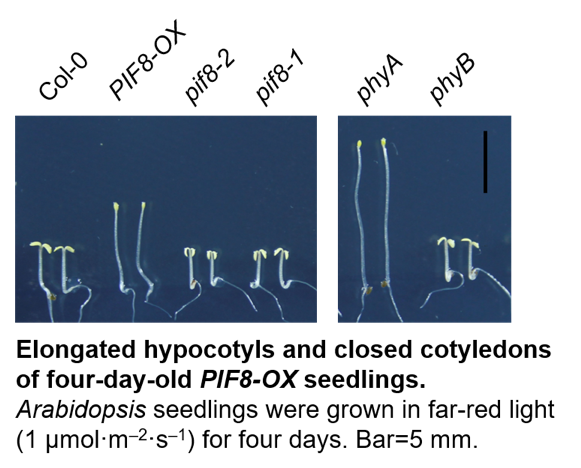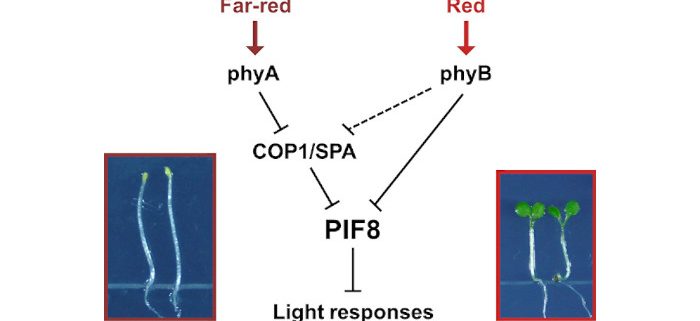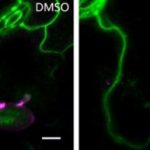PIF8: a new player in far-red light signaling
Oh et al. identify a far-red light-specific role for PIF8.
Plant Cell https://doi.org/10.1105/tpc.19.00515
By Jeonghwa Oh, KAIST
Background: When plants are in the dark, their stems get longer to search for light. When reaching the light, plant photoreceptors called phytochromes perceive light and signal the plant body to adapt to the light environment. Phytochrome A (phyA) and phyB are two major phytochromes perceiving far-red light and red light, respectively. Upon light perception, phyA and phyB promote light responses partly by inhibiting Phytochrome interacting factors (PIFs). In a model plant, Arabidopsis thaliana, eight different PIFs (PIF1 to PIF8) regulate light responses both redundantly and distinctively.
Question: Among the eight different PIFs, the role of PIF8 had not been fully understood. Thus, we decided to characterize the role of PIF8 in light signaling by focusing on its similarities and differences to other better-characterized PIFs.
 Findings: We found that Arabidopsis seedlings overexpressing PIF8 had longer hypocotyls with smaller and closed cotyledons than wild-type seedlings (that had short hypocotyls with larger and fully-opened cotyledons) in far-red light but not in red light. This was in contrast to seedlings overexpressing PIF3, which had those phenotypes in red light but not in far-red light. Such a far-red light-specific role of PIF8 is largely dictated by the far-red light-specific accumulation of PIF8 protein shaped by the interplay among phyA, phyB, and CONSTITUTIVE PHOTOMORPHOGENIC 1 (COP1), coupled with the resistance to be sequestered by phyA in far-red light. Accumulated and unsequestered PIF8 binds to target gene promoters and regulates gene expression, repressing light responses in far-red light.
Findings: We found that Arabidopsis seedlings overexpressing PIF8 had longer hypocotyls with smaller and closed cotyledons than wild-type seedlings (that had short hypocotyls with larger and fully-opened cotyledons) in far-red light but not in red light. This was in contrast to seedlings overexpressing PIF3, which had those phenotypes in red light but not in far-red light. Such a far-red light-specific role of PIF8 is largely dictated by the far-red light-specific accumulation of PIF8 protein shaped by the interplay among phyA, phyB, and CONSTITUTIVE PHOTOMORPHOGENIC 1 (COP1), coupled with the resistance to be sequestered by phyA in far-red light. Accumulated and unsequestered PIF8 binds to target gene promoters and regulates gene expression, repressing light responses in far-red light.
Next steps: PIF8 is a well-conserved PIF, implying it provides advantages to plants living in natural light environments. Thus, it would be interesting to determine if PIF orthologs from other plant species have similar roles and to identify natural light conditions where PIF8 plays a role.
Jeonghwa Oh, Eunae Park, Kijong Song, Gabyong Bae, and Giltsu Choi. (2020). PHYTOCHROME INTERACTING FACTOR 8 Inhibits Phytochrome A-mediated Far-red Light Responses in Arabidopsis. Plant Cell; DOI: https://doi.org/10.1105/tpc.19.00515
Key words: COP1, photomorphogenesis, phytochromes, PIFs




